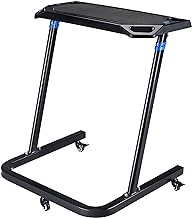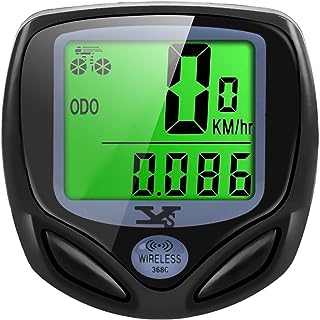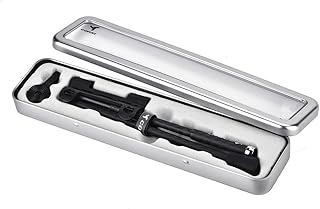5 important factors worth considering when looking for the best bike speedometer for rear wheel
Choosing the right bike speedometer for the rear wheel is important for a great cycling experience. You need to consider factors like accuracy, reliability, user-friendly features, and compatibility. Finding a speedometer that meets these criteria can improve your performance while riding. Understanding these elements will help you make a decision and enhance your cycling adventure.
See our guide to the best bike speedometer for rear wheel.
Accuracy
When buying a bike speedometer for the rear wheel, accuracy is key. You want a speedometer that gives you exact data to improve your cycling. Choosing a speedometer that measures your speed and distance accurately not only helps with training but also ensures you get the most out of your rides. Inaccurate readings can be frustrating and slow down your progress, so it’s important to pick a reliable speedometer you can count on.
A good bike speedometer for the rear wheel can make a big difference in your cycling routine. By selecting a model known for its accuracy, you can track your performance confidently, set goals effectively, and monitor your progress over time. When every pedal matters, a precise speedometer can help you reach your cycling goals. Investing in accuracy now will benefit you in the future, giving you the tools to enhance your cycling experience.
Compatibility with rear wheel size
When you’re buying a bike speedometer for your rear wheel, it’s important to choose the right size so that it works properly. Many cyclists make the mistake of not thinking about getting a speedometer that matches the size of their rear wheel. The size of your rear wheel affects how accurate the speedometer is, which can impact how fast you’re going, how far you’ve ridden, and how fast you’re pedaling. Getting a speedometer that is made for your rear wheel size not only helps you perform better, but it also gives you a more reliable biking experience.
Using a speedometer that doesn’t fit your rear wheel can make your data readings wrong and inconsistent, which defeats the purpose of tracking your biking progress. To get the most out of your speedometer, it’s important to make sure it matches your rear wheel to give you precise and consistent information. By understanding how important the size of your rear wheel is when picking a speedometer, you can make smart choices that improve your biking experience and help you reach your fitness goals faster.
Ease of installation
When buying a bike speedometer for your rear wheel, it’s important to look for one that is easy to install. A speedometer that is difficult to put on can be frustrating and may make you not want to use it to its full potential. Installing a speedometer should be simple, so you can focus on your ride instead of struggling with complicated instructions and tools. Getting a speedometer that is quick and easy to install can greatly improve your biking experience.
An easy-to-install speedometer not only saves time, but also makes sure your speed and distance readings are accurate and reliable while you ride. Look for speedometers with simple attachment systems that fit securely onto your rear wheel without needing professional help. A smooth installation process will also make you more likely to check your speed and distance regularly, which is important for safety and performance. It’s important for cyclists who want efficient and convenient biking gear to choose a speedometer that is easy to install.
Water resistance
When you’re thinking about buying a speedometer for your bike’s rear wheel, it’s important to prioritize water resistance. Some people might say it’s not a big deal, but ignoring the importance of water resistance could cause your speedometer to stop working quickly. Imagine this: you’re on a fun bike ride, facing the elements and pushing yourself, only for your trusty speedometer to break because of water damage. Dealing with the frustration and inconvenience that come after can ruin your ride. That’s why getting a speedometer with good water resistance is not just a bonus but a must for any dedicated cyclist.
A water-resistant speedometer makes sure that even if it’s raining or there are splashes from puddles, your device keeps working perfectly, giving you accurate data to improve your biking experience. It gives you peace of mind and convenience, so you can focus on the ride without worrying about technical problems. Plus, in the long run, choosing a water-resistant speedometer is cost-effective because it makes the device last longer. So, when you’re deciding on a bike speedometer, remember that water resistance is not just an extra feature but a key factor that can make your biking adventures even better.
Durability
When you’re looking to buy a bike speedometer for the back wheel, it’s important to think about how durable it is. It’s crucial to choose a speedometer that can handle rough terrain and different weather conditions that cyclists often face. Having a durable speedometer not only helps improve your performance while riding, but it also saves you from having to constantly replace or fix it, so you can focus on enjoying your time on the road without any interruptions.
While opting for a strong and well-made speedometer may cost more upfront, the benefits in the long run are worth it. A durable speedometer can handle vibrations, shocks, and exposure to the elements easily, giving you consistent and accurate readings mile after mile. By prioritizing durability in your decision-making process, you’re not just buying a device – you’re investing in a companion that will be with you on many cycling adventures, keeping track of your progress and performance every time you pedal.
Conclusion
Bike speedometers for the rear wheel offer cycling enthusiasts a more precise way to monitor their performance. This technology improves speed tracking accuracy and provides real-time data, making the riding experience smoother. Embracing this advancement allows cyclists to challenge themselves and achieve new personal records. Adding a rear-wheel speedometer changes how we ride bikes, turning each trip into an exciting and data-focused journey that drives improvement and excitement.


